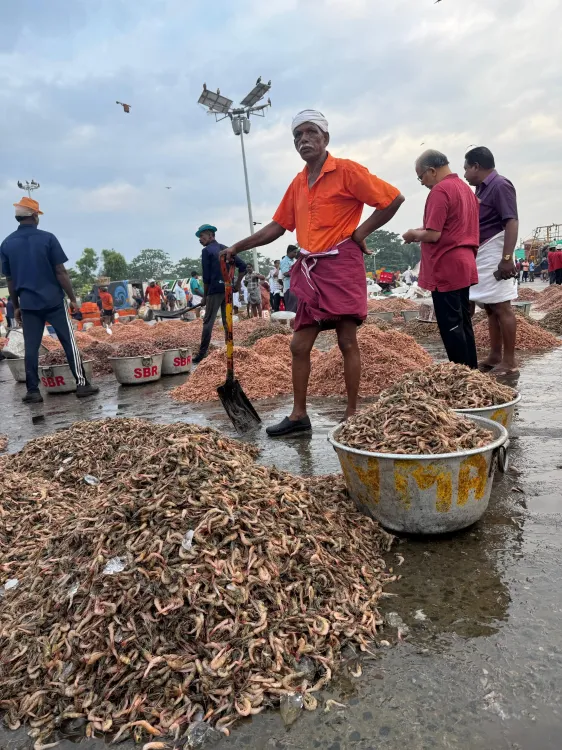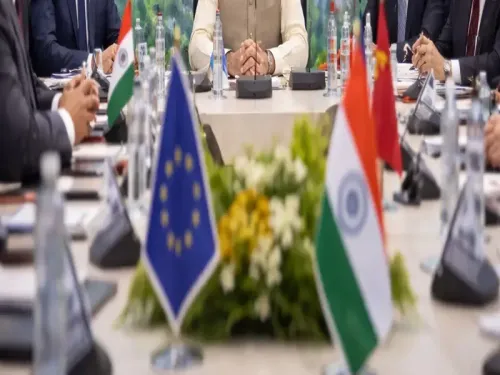How Will Indian Seafood Exporters Capture a Greater Share of the UK Market?

Synopsis
Key Takeaways
- Duty-free access for Indian seafood in the UK market
- Strengthening of coastal communities
- Enhanced competitiveness against international players
- Significant rise in seafood export value
- Focus on sustainable marine trade practices
New Delhi, July 26 (NationPress) With India's extensive production capabilities, adept workforce, and advanced traceability systems, the recent India-UK trade agreement empowers local exporters to capture a larger slice of the UK market and expand beyond traditional allies like the US and China, as stated by the government on Saturday.
The Comprehensive Economic and Trade Agreement (CETA), officiated in the presence of Prime Minister Narendra Modi and UK Prime Minister Keir Starmer, signifies a pivotal moment for India's fisheries sector. This deal not only provides duty-free access to a premium market but also aims to elevate coastal livelihoods, enhance industry revenues, and bolster India's reputation as a trustworthy supplier of high-quality, sustainable seafood.
According to the Ministry of Fisheries, Animal Husbandry and Dairying, "For fisherfolk, processors, and exporters alike, this is a unique opportunity to step onto a larger global stage. This agreement significantly contributes to India's overarching ambition of emerging as a global frontrunner in sustainable marine trade."
Indian seafood now stands shoulder to shoulder with nations like Vietnam and Singapore, which already enjoy benefits from Free Trade Agreements with the UK (UK-VFTA) and UK-SFTA, respectively.
This development levels the field and eliminates tariff disadvantages that Indian exporters previously encountered, especially for high-value products like shrimp and processed goods, as noted by the ministry.
CETA provides zero-duty access on 99% of tariff lines and opens essential service sectors.
For the marine sector, the agreement eliminates import tariffs on an extensive range of seafood products, enhancing the competitiveness of Indian exporters in the UK market. This is anticipated to particularly benefit exports of shrimp, frozen fish, and value-added marine products, thereby amplifying India's presence in one of its key seafood markets alongside labor-intensive sectors like textiles, leather, and gems and jewelry.
India's total seafood exports reached $7.38 billion (Rs 60,523 crore) in 2024-25, amounting to 1.78 million metric tonnes. Frozen shrimp continued to lead exports, contributing to 66% of total earnings at $4.88 billion. Specific marine exports to the UK were valued at $104 million (Rs 879 crore), with frozen shrimp alone accounting for $80 million (77%).
The primary seafood exports to the UK at present include Vannamei shrimp (Litopenaeus vannamei), frozen squid, lobsters, frozen pomfret, and black tiger shrimp—all of which are expected to capture further market share under CETA's duty-free access, according to the government.










